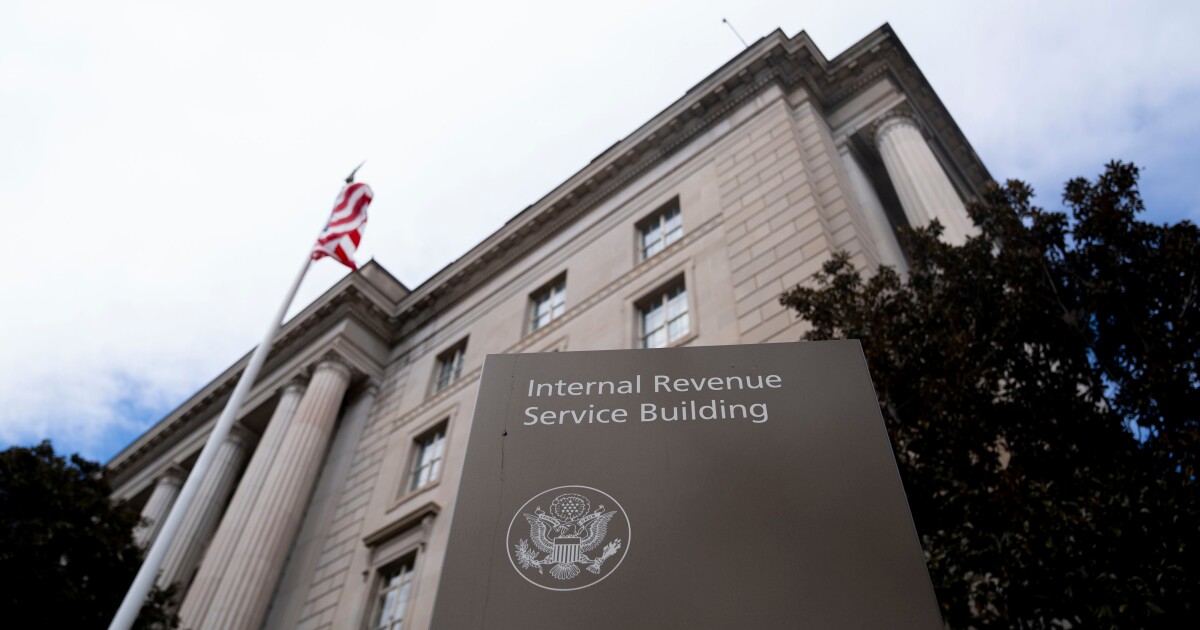Tax collection projections are down. Refunds are up. That’s a formula that could dampen U.S. government revenue and, if it persists, portend an earlier deadline for Congress to raise the debt ceiling — or risk a federal payments default.
That’s a potentially worrying sign for bond market watchers and the broader economy if the trend continues. Most estimates show the U.S. running out of funds to cover all of its obligations on time in the late summer or early fall, but some forecasters have also warned weak revenue intake could mean a breach as soon as late May or June.
The U.S. Treasury’s cash balance dropped to $281 billion on Thursday, according to the latest data from the department. Beyond that stockpile, it had, as of March 26, only $207 billion of so-called extraordinary measures left to continue to fulfill its financial obligations.
Tumult in Washington — cuts in the ranks of Internal Revenue Service agents spurred by Elon Musk’s Department of Government Efficiency, along with a tariff campaign that’s damaging consumer and business sentiment — could be contributing to lower-than-predicted tax collections, experts said.
The Congressional Budget Office on Wednesday warned about the potential for an earlier-than-anticipated debt ceiling breach, saying its baseline X-date estimate is for August or September, but noted that, if the government’s borrowing needs are significantly greater than projected, the Treasury’s resources could run out as early as late May.
So far this year, IRS receipts are coming in slower than projected. Filing season statistics show that the number of returns the agency has received is down 1.1%, compared with a similar time frame for 2024. Tax payments tend to spike in the final weeks before April 15 as filers who owe wait as long as possible to send in their money. As for refunds, however, the total is 4.6% higher than last year.
GOP wrangling
Congress doesn’t yet have a plan to address the debt ceiling if the X-date creeps closer on the calendar.
Senate Majority Leader John Thune is currently working to advance a Republican-led budget resolution that would include, with President Donald Trump’s tax cuts, at least a $4 trillion debt ceiling increase. But GOP lawmakers are just at the beginning stages of a lengthy and politically complicated negotiation that’s unlikely to be wrapped up in two months.
If the risk of a payment default seems more likely for May, Republicans will be pressured to temporarily set aside the tax-cut bill and focus solely on the debt ceiling. That would mean needing to rely on Democrats — because it’s unlikely there’d be a sufficient number of Republicans to back a debt-ceiling hike if it lacked the attraction of being combined with tax cuts. And that in turn would kick off another politically perilous game-of-chicken that could spook bond markets.
CBO Director Phillip Swagel told CNBC on Thursday he expects revenue tied to the April 15 individual tax-filing deadline and the June 15 due date for taxpayers with automatic extensions will tide the Treasury’s coffers over for a period.
Auditing question
“We are pretty confident that the government will get past those,” he said. “And then over the summer is the challenging part.”
Treasury Secretary Scott Bessent has said his department will offer a debt-ceiling update in early May, after the bulk of the tax receipts come in.
The biggest unknown is whether DOGE’s moves to reduce IRS staffing will hamper the agency’s ability to collect taxes and taxpayers’ willingness to pay up. Reductions in the IRS workforce could come with “dramatic increases in noncompliance,” according to a recent Yale Budget Lab report.
“People might change their behavior in terms of filing taxes, and again, sort of be more aggressive in taking those deductions to try to sort of evade taxes,” said Richard Prisinzano, director of policy analysis at the Yale Budget Lab.
“If we don’t see a payment boost then it’s more likely that people have changed their behavior,” he added. They know “the IRS is going to be in a weaker position to audit,” he said.
Shai Akabas, vice president of economic policy for Bipartisan Policy Center, said that while it is too early to tell, he’s more optimistic about the Treasury’s runway to keep paying the government’s bills.
“It might be a slightly higher possibility this year because of the unique factors that are going on,” Akabas said. “But we still think it is less than likely that all those factors will materialize in a way that leads to a large miss on tax season.”


 Economics1 week ago
Economics1 week ago
 Accounting1 week ago
Accounting1 week ago
 Economics1 week ago
Economics1 week ago
 Blog Post6 days ago
Blog Post6 days ago
 Personal Finance1 week ago
Personal Finance1 week ago
 Economics1 week ago
Economics1 week ago
 Personal Finance1 week ago
Personal Finance1 week ago
 Accounting1 week ago
Accounting1 week ago













